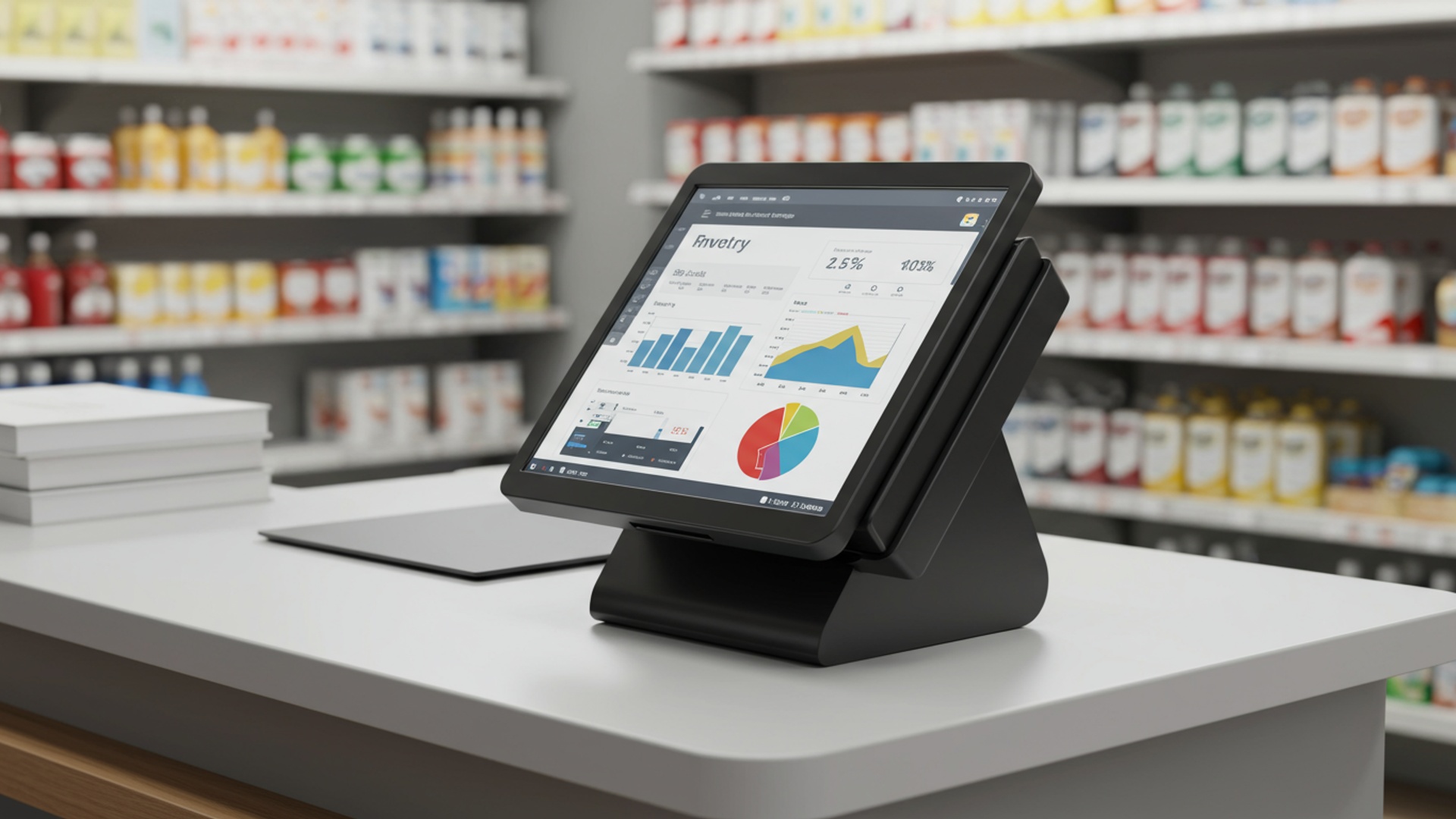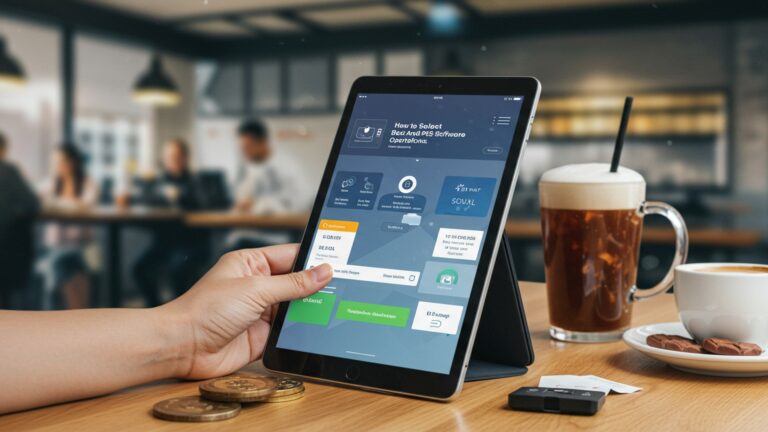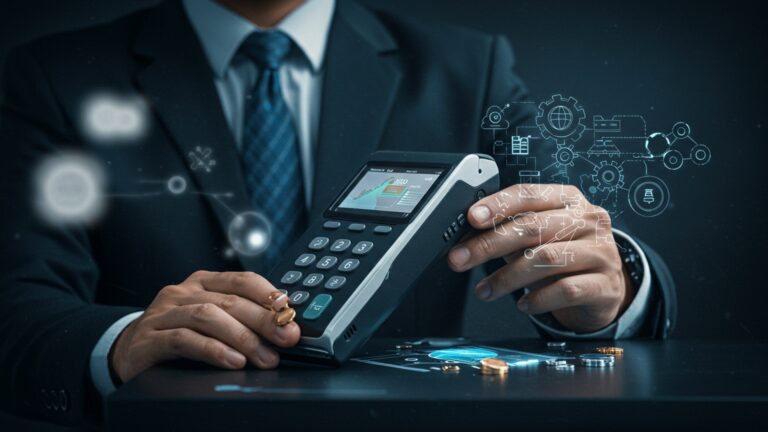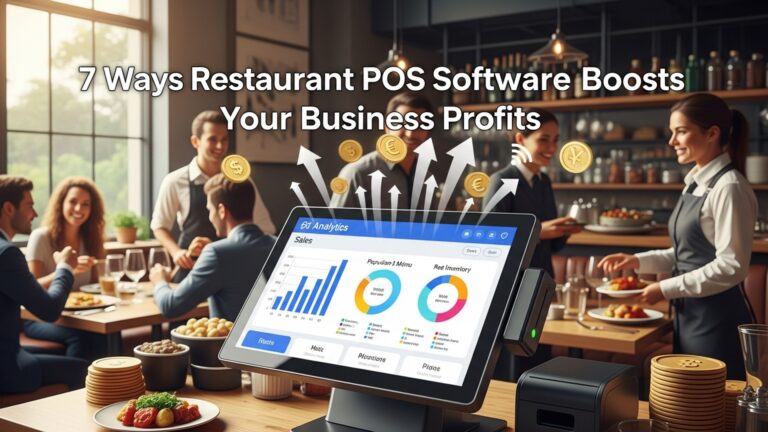Understanding POS Software A Practical Guide to Streamlining Your Retail Business
Modern retail thrives on efficiency. at its core lies advanced pos software, transcending mere transaction processing to orchestrate inventory management, customer relationship management (CRM). invaluable sales analytics. Today’s cloud-based and mobile POS solutions empower businesses with real-time data access, facilitating seamless omnichannel experiences and enabling swift adaptations to market shifts. These sophisticated systems leverage recent advancements, including AI-driven insights for personalized promotions and streamlined supply chains, fundamentally transforming operational workflows. Effectively deploying and optimizing pos software is no longer optional; it is a strategic imperative for achieving unprecedented operational fluidity and sustained growth in a competitive landscape.

Understanding the Core: What is POS Software?
At its heart, POS stands for Point of Sale. Essentially, pos software is the technological backbone of any modern retail or service business, facilitating transactions between a customer and the business. Far more than just a cash register, it’s an integrated system that manages sales, tracks inventory, handles customer data. processes payments. Think of it as the central nervous system for your store’s operations, transforming every sale from a simple exchange of goods for money into a data-rich event.
Historically, a “point of sale” was literally the counter where money changed hands. Early systems were mechanical cash registers. Over time, these evolved into electronic registers. then into sophisticated computer-based systems. Today’s pos software leverages cloud technology, artificial intelligence. extensive integration capabilities to offer businesses unprecedented control and insight. It’s no longer just about ringing up sales; it’s about understanding your business, your customers. your inventory in real-time.
The Anatomy of Modern POS Software: Key Features and Components
Modern pos software is a multifaceted tool designed to handle a vast array of business functions beyond simple transaction processing. Understanding its core components is crucial for appreciating its value:
- Sales Processing and Transaction Management
- Inventory Management
- Customer Relationship Management (CRM)
- Employee Management
- Reporting and Analytics
- Integration Capabilities
- Security Features
This is the fundamental feature. It allows staff to quickly scan items, apply discounts, process returns and exchanges, manage gift cards. handle various payment methods (cash, credit/debit cards, mobile payments). Efficient sales processing reduces queue times and improves customer satisfaction.
A robust pos software tracks every item that enters and leaves your store. It provides real-time updates on stock levels, helps manage variants (sizes, colors), monitors cost of goods sold (COGS). can even automate reorder points to prevent stockouts or overstocking. For a small boutique I once consulted with, implementing advanced inventory features in their pos software reduced their annual dead stock by 15%, significantly improving their cash flow.
Modern POS systems often include built-in CRM functionalities. These allow businesses to capture customer data (purchase history, contact data), manage loyalty programs, offer personalized promotions. assess customer buying patterns. This data is invaluable for targeted marketing and fostering long-term customer relationships.
This feature helps track employee hours, manage shifts, set up user permissions (e. g. , restricting access to specific functions or reports). monitor individual sales performance. It simplifies payroll processing and helps identify top performers.
This is where the true power of pos software shines. It generates comprehensive reports on sales trends, product performance, peak selling times, employee productivity. profitability. These insights are critical for making informed business decisions, from optimizing staffing levels to identifying best-selling products.
A significant advantage of contemporary pos software is its ability to integrate seamlessly with other business tools. This often includes e-commerce platforms (like Shopify or WooCommerce), accounting software (Xero, QuickBooks), payment gateways. even marketing automation tools. This creates a unified ecosystem for your business operations.
Protecting sensitive customer and business data is paramount. Good pos software includes features like user access controls, data encryption. compliance with industry standards (e. g. , PCI DSS for payment processing) to safeguard insights.
Types of POS Software: Choosing the Right Fit for Your Business
The landscape of pos software is diverse, with solutions tailored to various business models and preferences. Understanding the main categories is key to selecting the ideal system for your retail business.
On-Premise vs. Cloud-Based POS
This is one of the most fundamental distinctions in pos software.
| Feature | On-Premise POS Software | Cloud-Based POS Software |
|---|---|---|
| Definition | Software installed directly on your local hardware (computers, servers) within your business premises. | Software hosted on remote servers and accessed via the internet through a web browser or app. |
| Cost Structure | Higher upfront cost (software license, hardware, server maintenance). Lower recurring fees. | Lower upfront cost (subscription model). Higher recurring fees (monthly/annual). |
| Data Storage | Data stored locally on your servers. | Data stored on the vendor’s secure cloud servers. |
| Accessibility | Typically limited to the physical location where the software is installed. Remote access often requires complex VPN setups. | Accessible from anywhere with an internet connection, on various devices (laptops, tablets, smartphones). |
| Updates & Maintenance | Manual updates, often requiring IT intervention. Business is responsible for maintenance. | Automatic updates by the vendor. Vendor handles maintenance and security. |
| Scalability | Can be challenging and costly to scale (requiring new hardware/licenses). | Highly scalable; easily add new users, locations, or features as your business grows. |
| Internet Dependency | Less dependent on internet for core operations (though some features may require it). | Heavily reliant on a stable internet connection (though many offer offline modes for basic transactions). |
Industry-Specific POS
While general retail pos software serves many, some industries benefit immensely from specialized solutions:
- Restaurant POS
- Salon/Spa POS
- Grocery POS
Features table management, kitchen display systems (KDS), online ordering integration, split checks. ingredient-level inventory.
Includes appointment scheduling, client management with service history, staff commission tracking. online booking.
Handles weighted items, produce codes, loyalty programs. extensive inventory management for thousands of SKUs.
Mobile POS (mPOS)
mPOS refers to pos software that runs on portable devices like tablets or smartphones, often paired with compact card readers. This is ideal for:
- Pop-up shops and markets
- Boutiques
- Field services
Easy to set up and transport.
Staff can assist customers and complete sales anywhere on the floor, enhancing the shopping experience.
Technicians can process payments on-site.
Real-World Impact: How POS Software Streamlines Operations
The practical benefits of implementing a robust pos software system are profound, touching every aspect of a retail business. It’s not just about making sales; it’s about optimizing the entire operational workflow.
- Enhanced Efficiency and Speed
- Improved Inventory Control and Accuracy
- Better Customer Experience and Engagement
- Data-Driven Decisions through Powerful Analytics
- Reduced Human Error and Fraud Prevention
Imagine a busy Saturday morning. With modern pos software, transactions are processed in seconds. Barcode scanning eliminates manual entry errors. integrated payment processors ensure swift, secure financial exchanges. This dramatically reduces customer waiting times, leading to a smoother, more enjoyable shopping experience. For example, a local coffee shop I know reduced their average transaction time by 30% after switching to a tablet-based pos software, allowing them to serve more customers during peak hours without compromising service quality.
One of the biggest headaches for retailers is managing inventory. A good pos software provides real-time inventory updates. Every sale automatically deducts from stock. every return adds back. This eliminates the need for tedious manual counts, minimizes discrepancies. prevents both stockouts of popular items and overstocking of slow-moving goods. It can even trigger automated purchase orders when stock levels hit a predefined minimum, ensuring you always have what your customers want.
With integrated CRM features, your pos software allows staff to quickly access customer purchase history, preferences. loyalty points. This enables personalized recommendations and rewards, making customers feel valued. A memorable experience often translates into repeat business and stronger brand loyalty. Consider a small bookstore using their pos software to track customer reading preferences, then sending targeted emails about new releases by their favorite authors – a simple yet powerful way to engage.
The reporting capabilities of pos software are invaluable. You can review sales trends by product, time of day, employee, or even weather conditions. Identify your best-selling products, comprehend peak hours for staffing. track promotional effectiveness. This level of insight moves decision-making from guesswork to strategic planning. For instance, analyzing sales data might reveal that a particular product sells significantly better on weekends, prompting you to adjust your merchandising or staffing accordingly.
Manual processes are prone to errors – incorrect pricing, miscalculated discounts, or inaccurate inventory counts. pos software automates these tasks, significantly reducing human error. Moreover, features like user role permissions, transaction logs. integration with surveillance systems help deter and detect internal theft and fraud, safeguarding your assets.
Implementing POS Software: A Step-by-Step Guide
Successfully integrating new pos software into your business requires careful planning and execution. Here’s a practical roadmap:
- Assess Your Business Needs and Goals
- Research and Select the Right POS Software
- Data Migration and Setup
- Hardware Configuration and Integration
- Staff Training
- Go-Live and Ongoing Support
Before looking at any software, clearly define what problems you want to solve and what functionalities are essential. Do you need robust inventory tracking for multiple locations? Integrated e-commerce? Advanced customer loyalty programs? A detailed needs assessment will guide your search.
Based on your needs, research various vendors. Look at reviews, request demos. compare features, pricing models (subscription vs. one-time purchase). integration capabilities. Don’t be afraid to ask for a trial period. Consider the vendor’s reputation for support and ongoing development.
Once you’ve chosen your pos software, you’ll need to migrate existing data. This includes your product catalog (SKUs, pricing, descriptions), customer database. potentially historical sales data. This step can be time-consuming but is critical for a seamless transition. Many modern pos software solutions offer import tools, often using CSV files, to streamline this process.
While some cloud-based POS systems can run on existing tablets or computers, you’ll likely need specific POS hardware: barcode scanners, receipt printers, cash drawers. potentially card readers. Ensure your chosen pos software is compatible with the hardware you select or that the vendor provides a complete hardware package.
This is a critical, often underestimated, step. Your team needs to be thoroughly trained on how to use the new pos software effectively. Conduct multiple training sessions, provide cheat sheets. ensure there’s ongoing support for questions. An engaged and proficient team is vital for maximizing your investment.
After thorough testing and training, it’s time to go live. Be prepared for potential minor issues in the first few days or weeks. Have your vendor’s support contact insights readily available. Establish a process for collecting feedback from your staff and customers to continuously refine your use of the new system.
Actionable Takeaways: Maximizing Your POS Software Investment
Implementing pos software is just the first step. To truly unlock its potential and ensure it continues to drive value for your business, consider these actionable strategies:
- Regularly examine Your Data
- Invest in Continuous Staff Training
- Leverage Integrations Fully
- Stay Updated with Features and Security Patches
- Prioritize Data Security Best Practices
Don’t just collect data; use it. Schedule weekly or monthly reviews of your POS reports. Look for trends in sales, popular products, slow movers. employee performance. Use these insights to inform purchasing decisions, marketing campaigns. staff scheduling. The true power of pos software lies in its analytical capabilities.
Technology evolves. new features are often added to pos software. Regularly refresh your team’s knowledge. Encourage them to explore new functionalities and provide feedback on what works and what doesn’t. Well-trained staff are more efficient, make fewer errors. can leverage the system to enhance customer service.
If your pos software integrates with e-commerce, accounting, or marketing platforms, ensure these integrations are properly set up and utilized. A seamless flow of data between systems eliminates manual data entry, reduces errors. provides a holistic view of your business.
For cloud-based POS, updates are often automatic. For on-premise systems, ensure you’re regularly installing updates and security patches. These often include new features, performance improvements. crucial security enhancements that protect your business and customer data.
Even the most secure pos software needs user diligence. Enforce strong password policies, limit user permissions to only what’s necessary for each role. ensure your network is secure. Regular data backups are also crucial, especially for on-premise systems.
Conclusion
Understanding POS software isn’t just about processing sales; it’s about unlocking strategic growth for your retail business. My personal tip is to view your POS system not as a mere cash register. as the central nervous system of your operations, offering invaluable insights into customer behavior and inventory flow. For instance, I recall how a local bookstore owner, after truly embracing their POS analytics, discovered a surprising trend in genre popularity during specific weekdays, allowing them to optimize staffing and shelf displays for maximum impact. To truly streamline your business, actively engage with your POS data. Don’t just let it sit there; use it to forecast demand, identify your best-selling products. personalize customer interactions, much like the evolving omnichannel experiences we see today. Regularly review your system’s capabilities, ensuring you’re leveraging features for everything from loyalty programs to managing returns seamlessly. The journey to a truly efficient retail operation begins with this informed, hands-on approach. Embrace your POS as a powerful partner. watch your business thrive.
More Articles
A Comprehensive Guide to Mastering Essential POS Software Features
How to Choose the Best POS Software in India for Your Business
Discover How to Optimize Your Business with Smart POS Billing Software
Learn How Cloud Based POS Software Boosts Business Efficiency
How to Integrate Billing and POS Software for Maximum Profit
FAQs
What exactly is POS software?
POS, or Point of Sale, software is like the central nervous system for your retail operations. It’s the system your business uses to complete sales transactions. it does much more. Think of it as a comprehensive tool that handles everything from ringing up items and processing payments to tracking inventory, managing customer data. even generating sales reports.
How can POS software truly streamline my retail business?
It streamlines things in a big way! By automating many manual tasks, POS software speeds up checkout lines, reduces errors in pricing and inventory. gives you real-time insights into your sales performance. This means less time on administrative tasks and more time focusing on growing your business and serving customers.
Do only large retail chains benefit from POS systems, or are they good for small businesses too?
Absolutely not just for big chains! Modern POS software is incredibly scalable and beneficial for businesses of all sizes, including small boutiques, cafes. pop-up shops. There are many affordable and user-friendly options specifically designed to meet the needs of smaller retailers, helping them compete more effectively.
What key features should I consider when picking out a POS system?
Look for core functionalities like sales processing and payment acceptance, inventory management, customer relationship management (CRM), employee management (like time tracking and permissions). robust reporting and analytics. Integration capabilities with other tools you use, like accounting software or e-commerce platforms, are also super vital.
Is setting up and learning how to use new POS software a complicated process?
It really depends on the system. most modern POS solutions are designed with user-friendliness in mind. Many offer intuitive interfaces and clear setup guides, often with online tutorials or customer support to help you get started. While there’s always a learning curve with new technology, it’s generally manageable and the long-term benefits far outweigh the initial effort.
How does POS software help me keep better track of my inventory?
It’s a game-changer for inventory! POS software automatically updates stock levels every time a sale is made or an item is returned. It can also help you track product variants, set reorder points, identify best-selling items. even manage multiple store locations, preventing stockouts and overstocking.
Can using POS software improve my customers’ shopping experience?
Definitely! Faster checkouts mean less waiting. accurate pricing builds trust. Many systems also let you easily manage loyalty programs, offer personalized promotions. track purchase history, which helps you grasp your customers better and provide a more tailored, satisfying shopping experience.






